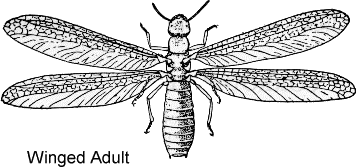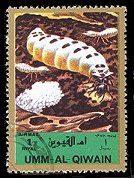Isoptera
Pronunciation: [I·SOP·ter·a]
Pronunciation: [I·SOP·ter·a]
Common Name: Termites / White Ants
Greek Origins of Name: Isoptera, derived from the Greek “iso” meaning equal and “ptera” meaning wings, refers to the similar size, shape, and venation of the four wings.
Hemimetabola, i.e. incomplete development (egg, nymph, adult)
Polyneoptera, technically considered advanced Blattodea, but kept separate for purposes of this course
Extremely common in tropical and subtropical climates. Generally less abundant in temperate regions. Approximately 4 families and 44 species in North America and 7 families and ~3000 species worldwide
The termites are another group of insects that appear to be closely related to cockroaches. This conclusion is based on behavioral and ecological similarities between termites and wood roaches (members of the family Cryptocercidae). These cockroaches live in fallen timber on the forest floor, feeding on wood fibers which are then digested by symbiotic microorganisms within their digestive systems. They live in small family groups where each female provides care for her young offspring. Termites and wood roaches are thought to be close relatives because they both occupy similar habitats, share the same type of food resources, have the same intestinal symbionts, and provide care for their offspring.
Termites are the only hemimetabolous insects that exhibit true social behavior. They build large communal nests that house an entire colony. Each nest contains adult reproductives (one queen and one king) plus hundreds or thousands of immatures that serve as workers and soldiers. Like cockroaches and mantids, the termites are most abundant in tropical and subtropical climates.


Termites are an important part of the community of decomposers. They are abundant in tropical and subtropical environments where they help break down and recycle up to one third of the annual production of dead wood. Termites become economic pests when their appetite for wood and wood products extends to human homes, building materials, forests, and other commercial products. In the United States alone, annual losses due to termite infestations are estimated at more than 800 million dollars.
Rhinotermitidae (Subterranean termites) — These insects build nests in the soil and generally infest wood that is in contact with the ground. This family includes the most destructive species found in the United States: the eastern subterranean termite (Reticulitermes flavipes), the western subterranean termite (R. hesperus), and the Formosan subterranean termite (Coptotermes formosanus).
Hodotermitidae (Rottenwood termites) — Generally found inhabiting moist wood. Contact with the soil is not a requirement. This family includes the Pacific dampwood termite, Zootermopsis angusticollis.
Kalotermitidae (Drywood and dampwood termites) — These insects nest in the wood itself and do not require contact with the soil. Pest species include the western drywood termite (Incisitermes minor) and the forest tree termite (Neotermes connexus).
Termitidae — This is the largest family of termites worldwide, but all of the North American species are relatively minor in importance.
 In some termites, the queen’s abdomen becomes so swollen with eggs that she cannot move without help from her workers. Such a species (belonging to the genus Termes) is illustrated on this stamp issued in 1973 by the government of Umm Al Qiwain (a sheikdom that is part of the United Arab Emirates).
In some termites, the queen’s abdomen becomes so swollen with eggs that she cannot move without help from her workers. Such a species (belonging to the genus Termes) is illustrated on this stamp issued in 1973 by the government of Umm Al Qiwain (a sheikdom that is part of the United Arab Emirates).